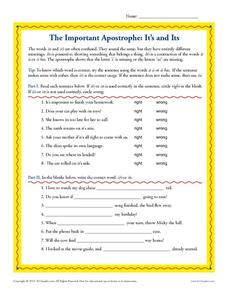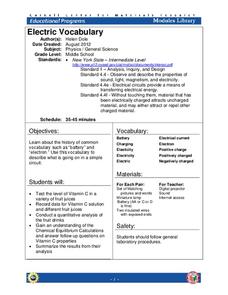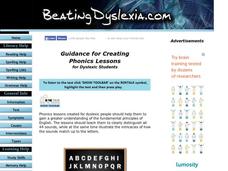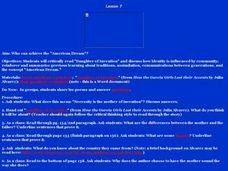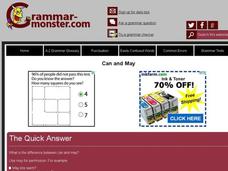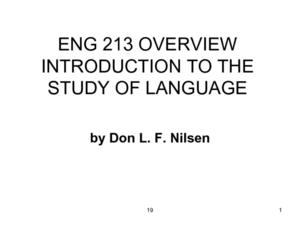K12 Reader
The Important Apostrophe: You're and Your
You're going to love a worksheet that teaches your class the difference between you're and your. Learners read a brief introduction explaining the two words and practice identifying the correct uses. Then, they read sentences...
K12 Reader
The Important Apostrophe: It's and Its
Help class members distinguish the difference between its and it's. As individuals read sentences and determine if the use of the two words are correct or incorrectm they fill in the blanks of sentences with the appropriate it's or its.
K5 Learning
Liza's First Spelling Bee
Learners read about Liza's first spelling bee before answering six reading comprehension questions. Skills include identifying similarities, making inferences, drawing conclusions, and answer questions based on explicit information in...
Cornell University
Electric Vocabulary
Practice electric vocabulary using multiple methods. Learners begin by watching a video that explains vocabulary related to electric currents. They match vocabulary cards to practice and then create an electric circuit. Using the...
Curated OER
Reading Poetry
Present your class with an overview of poetry-related information. The slides are clearly organized by topic, starting with reading poetry, ending with myths, and touching on everything from the five senses to open and closed forms of...
Road to Grammar
Emphatic Adjectives
Ensure that your learners have a wonderful, fabulous, astonishing, outstanding knowledge of adjectives. This resource focuses in particular on strong adjectives. Included are a few pages of explanation and instruction, two exercises, and...
Curated OER
Hop on the Express Train to Read Expressively
Encourage beginning readers to read expressively. After the teacher models what it's like to read with expression, pairs of learners work together to practice developing this ability. While one learner reads, the other marks a check-list...
Curated OER
Easily Confused Words: Role and Roll
Do your kids confuse role and roll? Discuss the difference with them, show them the example sentences provided, and have them take the short quiz that follows.
Curated OER
All Right, All Ready...All Together! Grammar Practice
Are you all ready, already? Do your kids confuse all right with alright? All ready with already? All together with altogether? Use this instructional activity to clear things up! After defining each term and its homonym, examples are...
Curated OER
Guidance for Creating Phonics Lessons for Dyslexic Students
Here is a quick and easy guide to help a new teacher build phonics lessons for students with dyslexia. It stresses the importance of fundamental basics while also providing clear and direct instructional practices that will help you...
Curated OER
Number Patterns
An easy way to introduce numerical patterns, these activities can be made simpler by using addition, or more difficult with division, fractions, and percentages. Children examine patterns and determine the missing number in the sequence....
Curated OER
Reading and Writing in the Right Direction
Beginning writers practice writing and reading from left to right using green and red dots. You'll need notecards with a green dot on the left side and a red dot on the right side. Do your learners understand that print moves from left...
Curated OER
Easily Confused Words: Precede and Proceed
So many words are easily confused in the English language. Take precede and proceed, for example. Look at the example sentences provided here, and then have your learners take the short quiz. Have they mastered these vocabulary terms?
Curated OER
Derbyshire Accent Project 1
Compare the Derbyshire accent to Standard English. There are eight common differences between the two languages for learners to discover. A great worksheet to start a discussion on the various forms and conventions of Standard English.
Curated OER
Using Our Five Senses
Students explore human anatomy by creating an oral report in class. In this five senses lesson, students read several real life situations and identify which of the five senses help in certain situations. Students create an oral...
Curated OER
Antonyms 1
Explore antonyms! There are 10 multiple-choice questions here, and learners must choose the answer that represents the opposite of the word in capital letters. Example words include buoyant, urban, and volatile.
Curated OER
Meet Our Teachers
Learners of all ages interview, record, and photograph teachers and staff at their school. They organize the photo with a soundbite into a PowerPoint presentation. They transcribe the interview and write a response to it.
Curated OER
Who Can Achieve the "American Dream"
Exploring the idea of working to achieve the American Dream, the class reads an excerpt from How the Garcia Girls Lost their Accents by Julia Alvarez. Following, the class analyzes the excerpt and discusses the theme of the reading using...
Curated OER
Easily Confused Words: Can and May
Can is one of the most commonly misused words. In actuality, may should be used in many of the sentences can tends to appear in. Review these example sentences with your third and fourth graders, and then have them complete the short,...
Curated OER
Introduction to the Study of Language
Though the presentation doesn't have any actual information, these slides detail the reading requirements and exam schedule of a sixteen-week class on the study of language. If you are planning a class on this topic, the presentation...
Curated OER
The Houdini Box: Compare and Contrast
How did Houdini do it? After reading a short passage about magicians and their tricks, readers are asked to compare and contrast some of the illusions these prestidigitators create.
K12 Reader
Choose the Correct Homophone
It's a known secret that English can be a difficult language to learn, and homophones don't make it any easier. Help your young readers tackle these tricky words with this simple fill-in-the blank exercise in which...
Illustrative Mathematics
Writing Expressions
Practice writing algebraic expressions from written phrases. The objective is to consider two seemingly similar phrases, write them as algebraic expressions, and then simplify using the order of operations. Learners are challenged to...

